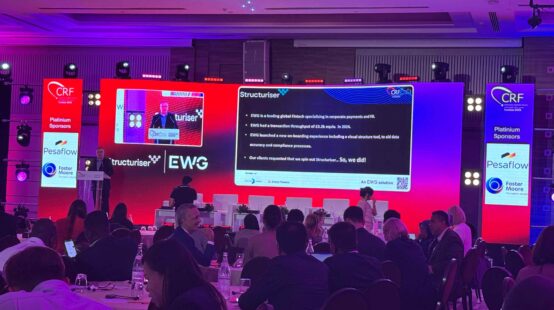From 13th-15th October 2025, Blockworks’ Digital Asset Summit London brought together regulators, banks and builders to tackle UK crypto regulation, stablecoins, tokenisation and DeFi for institutions. All of these topics are highly relevant for Jersey and Jersey businesses, so Julie (from GoJ FS Dept.) and I decided to go and check it out.
Below is a summary of my key takeaways from the event – hoping the content will be as useful for others as it was for me.
1) Regulation
It didn’t require any convincing that the UK is slipping on regulatory delivery, resulting in businesses opting to operate from other jurisdictions like Gibraltar and Singapore while waiting for certainty. Nigel Farage claims Reform UK will “bring crypto in from the cold” if elected. Clarity from the UK may arrive next year – but this may be too late.
The hardest question remains how to hold DeFi frontends accountable – a question that plagues regulators globally.
Speakers discussed UK ‘tokenised gilts’ concepts as part of the roadmap to digital capital markets and flagged the Government’s digital property rights work as a foundation for onchain legal certainty.
The recent UK stablecoin consultation (especially issuance caps and wallet limits) was widely viewed by attendees as unworkable in practice.
There was also concern that UKdomiciled issuers could face different requirements from overseas issuers accessing the UK market, an equivalence question Jersey should track closely.

2) Stablecoins & Digital Payments
The big institutional use case for stablecoins is cash operations: instant crossborder settlement for payables/receivables and intraday yield on idle balances via interestbearing, Tbillbacked tokens (tokenised Tbill funds/notes e.g., tokenised MMFs and shortduration Treasury products such as BUIDL/FOBXX and USDY/OUSG) that can also serve as eligible collateral for shortterm funding. MiCA requires cash as collateral for stablecoins, which is inefficient.
Panels comparing stablecoins, tokenised deposits and CBDCs disagreed on whether there is a future of peaceful co-existence ahead – but agreed on the standards that would be required (fullreserve backing, frequent attestations, predictable redemption windows, and interoperability across chains and on/off ramps).
It was highlighted that stablecoins are near $300bn in market value and it was argued that as a tokenisation product alone they could 10x realeconomy use as distribution shifts from exchanges to payments/treasury channels.
Closedloop settlement tokens help with internal settlement but bring limited network effects – much like Amazon stablecoins and the like which were compared to the future of gift cards.
Concerns were also raised about the use of dollar-denominated stablecoins as a distribution system to get more dollars held by other countries citizens – and the associated outflow of GBP and EUR into USD.
GBP yield-bearing stablecoins are going to be needed for GBP-using institutions, but issuers shouldn’t try to compete with USDs hold on the trading market. The success of a GBP stablecoin depends on adoption by institutions, acceptance in regulated markets, and permissioned DeFi.
Can Jersey become a clearing hub for stablecoins? or for issuing yield-bearing GBP stablecoins?

3) Tokenisation
Tokenised moneymarket funds are live with digital savingsstyle accounts emerging for lowrisk yield under institutional controls. Speakers expect widespread proliferation of tokenised equities next, but only if the token is the legal security itself, not simply a representation as many are today. The push is to anchor tokens in booksandrecords networks (such as Canton), so tokenised positions are recognised by banks, auditors and courts.
Speakers highlighted tokenised private credit for transparency and pooled collateral that can move faster across venues.
Data points shared at DAS put tokenised RWAs at c.$33bn, with a 3–5-year execution window before tokenisation becomes tablestakes.
The practical upside is settlement in seconds, cleaner registers and programmable corporate actions that cut admin time.
The future of tokenisation is for assets where transfers today are very cumbersome and have significant operational friction.
4) Institutional DeFi
Friday’s $20bn+ leveraged liquidations loomed over the agenda, but with a surprisingly positive outlook. The markets recovery and swift identification of the causes were cited as evidence of a maturing market structure.
It was also noted that Aave and other DeFi venues kept functioning through the stress, where large exchanges like Binance performed less than admirably. This point was used to highlight the necessity for institutions to have access to DeFi protocols (and 24/7 teams).
Regulatory discussions got specific about where KYC should happen in DeFi. The consensus seemed to be that regulations should happen at frontends and access points (wallets, interfaces, permissioned pools) while keeping core protocols open. Several speakers argued for centralised intermediaries to deliver identity checks and reporting.
Other conversations around institutional DeFi centred on liquidity and capital efficiency, including through yield-bearing collateral (e.g., USYC or Bitcoin yield generation with Function).
S&P is starting to provide ratings for DeFi protocols which can help businesses evaluate risks in conjunction with security screenings etc.
One takeaway that particularly stuck with me is that DeFi is a lot newer than stablecoins (who have only recently seemingly found their ‘killer application’), so we need to remember that there is likely more time until DeFi finds mainstream adoption.
Can Jersey businesses adopt yield-bearing stablecoin / bitcoin treasuries?

I hope this report was useful. DAS London showed real momentum for institutional adoption of digital assets – let’s make sure Jersey claims its share.
During my time at DAS London I also met with many exciting individuals and businesses who are keen to work with Digital Jersey to provide education and support to businesses in this sector… so watch this space.
If you’d like to discuss anything further, please feel free to get in touch.
This report is informational and not legal, tax, or investment advice.




